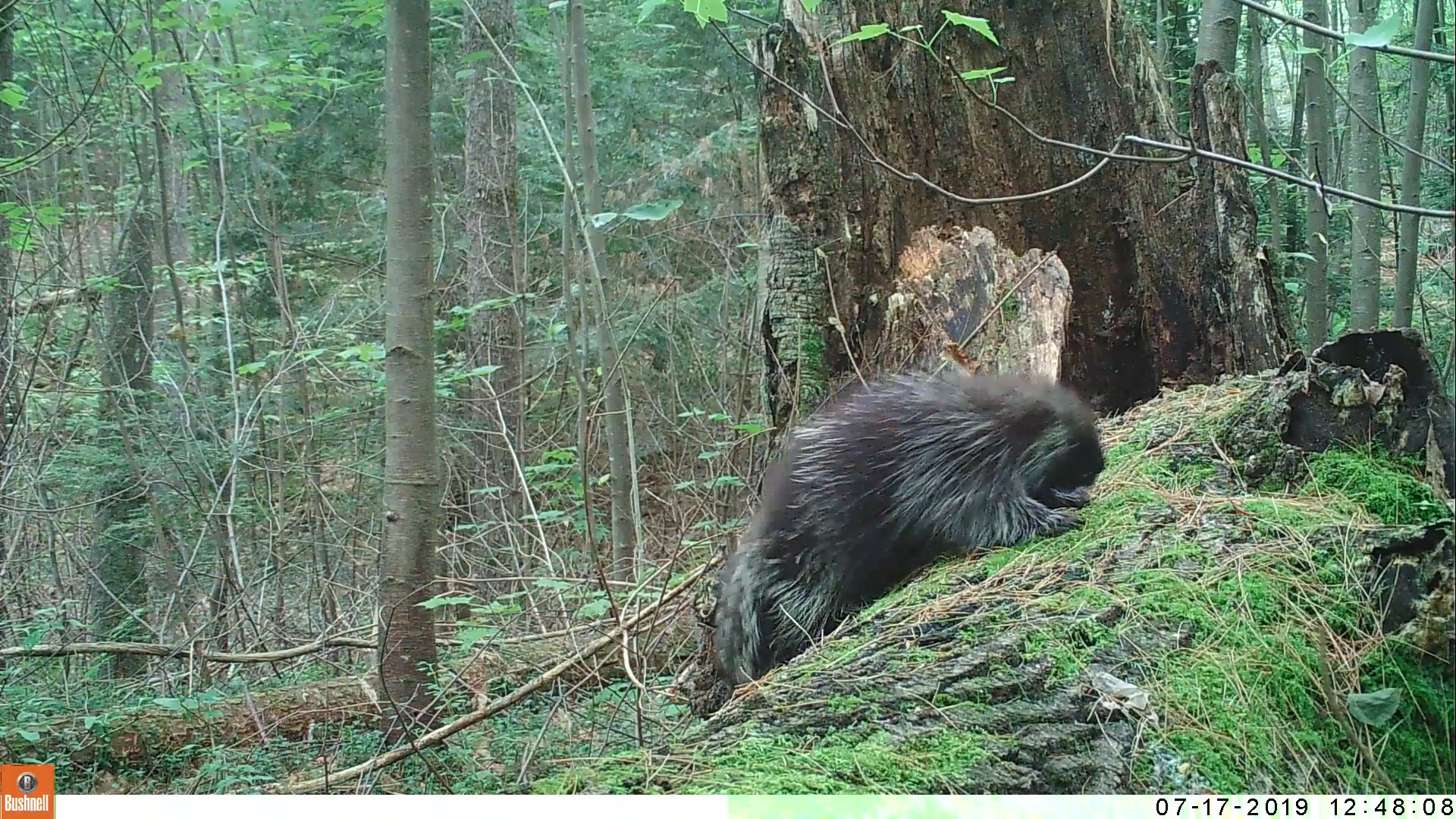Targeting Unique Habitat Features with Trail Camera

Often when I camera trap I target some kind of animal sign to get a certain species or even a specific behavior. Some examples from past posts are an otter latrine, a bear marking tree, a woodchuck marking a sapling, and a deer scrape. That is a great strategy, but another strategy is to target unique habitat features to capture the general activity of multiple species, rather than specific behaviors of a certain animals. The idea here is to target a locally scarce resource which appeals to multiple species. Some examples are:
- A water source in a dry climate
- A jumble of boulders or logs
- A “wolf tree” (a large tree with a spreading crown in a forest of smaller trees)
- A cave
- A large tree or snag with cavities of various sizes
- An especially large log
A key point here is that the habitat feature should be something in short supply. So, a jumble of boulders won’t necessarily be attractive if it is in a boulder field. A large log won’t be that productive if there are many logs throughout the forest. But, a large log in a forest where logs are few and far between may be used by a variety of animals for resting, grooming, scent marking, perching, displaying and singing. The space under a log may be used for shelter and for food storage. Predators may visit the log to hunt for the other animals using it.
Below is an example of a large log that attracted a a lot of animals. My original reason for targeting this log was the fact that it was used for displaying and drumming by a ruffed grouse. The log was popular among other species probably for the same reason that the grouse used it: It was an enormous log in an otherwise young forest with few large logs. The video below shows just the highlights of activity, not all of the video clips.
What is your strategy when camera trapping? Are there certain habitat features which you like to target? Feel free to share your comments and questions below.

Great idea! One of your many that have inspired me.
Thanks, Cherrie!
The day time porcupine footage provides the high points of this (although I know that you are justifiably proud of the drumming Ruffed Grouse). That must be the Bushnell Natureview that captured that video and it is great for daytime, but based on these examples it is not as good as other cameras at night. I am tempted to add that Bushnell to my collection and set up two cameras on my favorite log, one for night (Browning XD) and one for day.
. . .
Again that video of the porcupine is wonderful in the action captured and the video quality.
Hi LLloyd, yes, this is the NatureView used without either of its close focus lenses. Used this way, neither the day or night captures are particularly good quality. This camera’s strength is in the quality of day captures when using either of the two close focus lenses. The night time captures are not very impressive with or without a close focus lens. I wouldn’t recommend this camera unless you are interested in camera trapping small animals at close range, especially those which are active by day.
I usually put my camera traps at a landscape feature: cave, rim of the plateau, seasonal pool, but usually a fallen log. see some of my older blog posts — https://forestandfield.blogspot.com/
Thanks, Woody, I’ll check it out.
Pingback:Grizzly Bear Root Grubbing: Foraging Sign, Favored Plants, Site Selection - Winterberry Wildlife